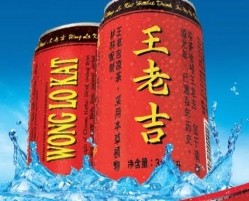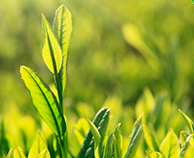Energy drinks may hog the limelight, but watch out for RTD teas: Euromonitor

In 2013-2014 period, the global energy drinks category is expected to grow 8.7% (in constant terms) while naturally healthy RTD tea is up 9.5%.
Despite the ‘ongoing energy drink craze,’ consumers are primed to spend $14.5bn in next five years on naturally healthy RTD tea.
Ewa Hudson, global head of health and wellness research, Euromonitor, told BeverageDaily.com RTD tea growth is fuelled by China and Asia, where a long history of tea and herbal medicine gives the category a head start.
“Everyone’s focusing on growth for energy drinks, which are performing really well. [But] it’s interesting to see that RTD tea is doing even better,” she said. “We should bring attention to this other category.”
Hudson points to the global expansion of Chinese herbal tea brand Wong Lo Kat and its sister product Jiaduobao, which resulted in combined absolute growth of $1.5bn dollars in 2013, exceeding the combined sales of both Red Bull and Monster.
So should you put your money into energy drinks or RTD teas? “I would invest in both!” said Hudson. “Both are really strong categories”
RTD tea is not truly global… yet
The energy drinks category is worth $30bn dollars globally, while naturally healthy RTD tea is just a little behind on $29.6bn. However, although the energy drinks category is popular globally, tea growth is concentrated in certain regions.
For example, Chinese growth is predicted as 17% for naturally healthy RTD teas, with a 22.5% growth in energy drinks. However, the US is seeing a 5% growth in energy drinks, but a decline in sales of RTD teas.
Tastes and products also vary in different regions, Hudson added.
“RTD tea has the potential to go global, but [faces the] same challenges as other categories - sugar is the biggest one,” she said.
“In Japan, you have lots of green teas which are mildly sweetened or with few degrees of sweetness, but many people opt for unsweetened. However, this version wouldn’t be so appealing to the Western or American consumer. Teas in Europe and the US are usually sweetened.
“We do see developments - such as sweetening with stevia - to reduce sugar content, and use of other sweeteners.”
Healthy soft drinks
It’s not just energy drinks and RTD teas that are growing in popularity. They are part of a broader category of ‘health and wellness soft drinks,’ with almost half of total soft drink retail sales coming from this healthy varieties, according to Euromonitor.
This category covers products where sugar or fat have been reduced, and includes mineral and spring water, energy drinks and other functional drinks, superfood juices, and naturally healthy RTD teas.







